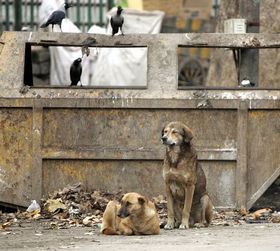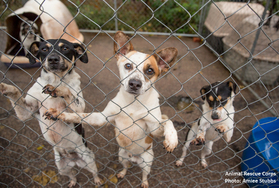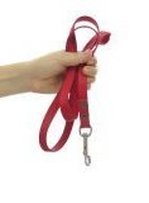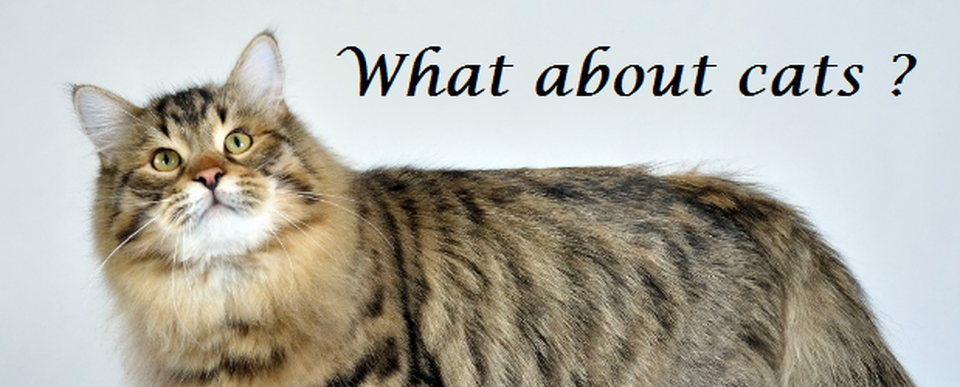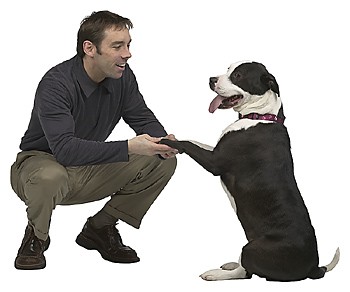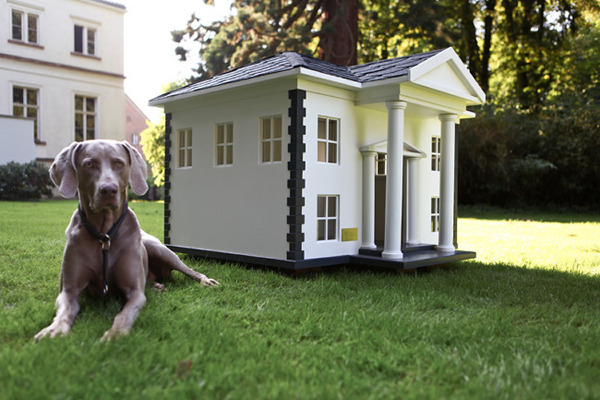Agatha's Lucky Paws Rescue and Sanctuary (ALPRAS) is a non profit rescue organization, with Foster Homes located in Central and Coastal Florida, dedicated to finding dogs and cats forever homes. We promote training, education, and awareness. This includes a broad spectrum of subjects such as spay/neuter, vaccinations, volunteer/fostering, pet health, animal rights, and more.
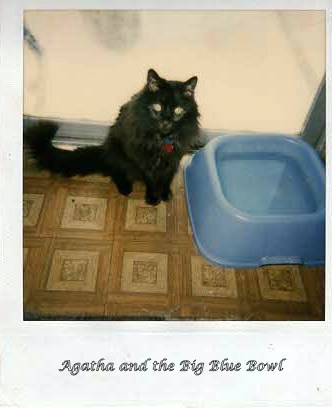
Our name comes from a beloved family member named Agatha.
Agatha was a strong, intelligent, beautiful, brave and sometimes bossy cat who not only helped define being a cat with 'nine lives', but also shows how long a true commitment to any animal can be. Born on June 1st, 1971, she was one of the very last line of Pure Black Russian Longhairs to make it out of the country before they were no longer allowed to be exported or leave Russia.
She survived being shot, jumping out of a car, stabbed, eating Penny Royal (very toxic to cats), and didn't let cancer take her for many years beyond what her estimated time left. If fact, Agatha live to be 35 years old! What's more is she was extremely tolerant of new animals when we were only just realizing that we wanted to rescue animals, she was already 30 years old by that time.
She knew exactly how to handle each animal individually, cat or dog, and was a fantastic pack leader! Its no wonder with just these short notes that we would absolutely name the rescue after her. This lucky girl who survived so much and taught other animals, and even people, to walk in her paw prints. Her dedication to us and the other animals in the house inspired us and her final days to wish kindness to any animal who did not ever get the chance to know that kind of love.
That love found here, 'Where Everypawdy is Somebody' !
Agatha was a strong, intelligent, beautiful, brave and sometimes bossy cat who not only helped define being a cat with 'nine lives', but also shows how long a true commitment to any animal can be. Born on June 1st, 1971, she was one of the very last line of Pure Black Russian Longhairs to make it out of the country before they were no longer allowed to be exported or leave Russia.
She survived being shot, jumping out of a car, stabbed, eating Penny Royal (very toxic to cats), and didn't let cancer take her for many years beyond what her estimated time left. If fact, Agatha live to be 35 years old! What's more is she was extremely tolerant of new animals when we were only just realizing that we wanted to rescue animals, she was already 30 years old by that time.
She knew exactly how to handle each animal individually, cat or dog, and was a fantastic pack leader! Its no wonder with just these short notes that we would absolutely name the rescue after her. This lucky girl who survived so much and taught other animals, and even people, to walk in her paw prints. Her dedication to us and the other animals in the house inspired us and her final days to wish kindness to any animal who did not ever get the chance to know that kind of love.
That love found here, 'Where Everypawdy is Somebody' !
Here at Agatha's Lucky Paws our main goal is to make sure a 'Forever Home' is a True Forever Home. We want to get it right the first time, every time. It's because of this dedication that we have an excellent track record for matching animals with appropriate homes and families. We accomplish this by really taking the time to understand each animal individually and getting to know their personality, behaviors, and needs before placing them up for adoption. We believe in full disclosure to prospective families. Each home and person has an individual personality and we want these to be a great match. This has been a huge part of our success that often sets us apart from other organizations and brings people back to adopt from us again. Our belief in these connections between people and animals is what makes Agatha's Lucky Paws a place Where Everypawdy is Somebody.
Agatha's Lucky Paws currently has two main programs.
- Rescue
- Bringing in strays.
- Pulling from overwhelmed rescues and shelters with high levels of animal dumping.
- Owner surrenders in Special Cases.
- Long term animals that need rehabilitation or extensive training.
- Hospice for very aged or terminally ill animals.
- Animals unadoptable to the general public for safety, liability, or disability.
ALPRAS has been in rescue for over 10 years. Though we have conjoined with larger rescues in the past and continue to work with other rescues, we still stand as an entity of our own with our values in place. Currently we are a small rescue but looking now towards growth and are working to obtain our 501c3 status. Growth can only happen with people coming together like you! Adoption, Fostering, Volunteering, Donations, and Education all help us to grow stronger, save more animals, and even help keep owners from giving up on their own pets.
Agatha's Lucky Paws is first and foremost Rescue.
To look at our Adoptable Animals, click here.
To learn more about how our Rescue works, see below!
"We believe in one breed, and that breed is Dog."
ALPRAS accepts all breeds of dogs as long as there is a place for them to go with a Foster Home that can handle them. Some people can handle breeds of dogs that others can't. If we pull from an overwhelmed rescue or shelter, we will try to stay in the means of what our Foster Homes can handle. Strays of any breed or size that we find are a different story because they have no where to go and will stay at the Founder's residence until a Foster Home who can handle them is available or they are adopted.
No matter their 'pedigree', they all are welcome. Big or Small, gotta love 'em all!
No matter their 'pedigree', they all are welcome. Big or Small, gotta love 'em all!
ALPRAS takes cats in from Overwhelmed Shelters and Rescues, suitably friendly ranging stray cats, and in special instances owner surrenders.
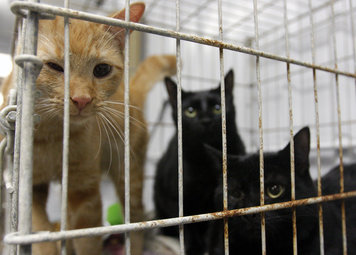
Shelters and Rescues can easily become overwhelmed with cats. Roughly 3.4 Million cats enter Municipal Shelters every year with at least 1.4 million being euthanized. This does not include the number of cats in the Humane Society, ASPCA, Friends of Strays, or similar large Shelter Organizations. This number also doesn't include various animal rescues around the country. Rescues often too easily take in far more cats than they can handle and if they experience low adoption rates it can make a rescue fail. Lastly, this also does not include personal individuals with large hearts but often fall into hoarding situations and wind up harming instead of helping the animals they love.

A Free Ranging or Stray Cat is a cat who has been socialized to people at some point in their life, and may have had a home. A stray cat can become feral and lose it's bond with humans due to lack of contact or bad experiences with humans. Sometimes a stray cat can also become a pet cat once again with patience and kindness. An easy way to explain it:
– “A stray cat is a domestic cat that has been abandoned or has ‘strayed’ from home and become lost. Stray [cats] were once pets and they can usually be successfully rescued and placed in homes.” – Stray Cat Handbook
– “A stray cat is a domestic cat that has been abandoned or has ‘strayed’ from home and become lost. Stray [cats] were once pets and they can usually be successfully rescued and placed in homes.” – Stray Cat Handbook
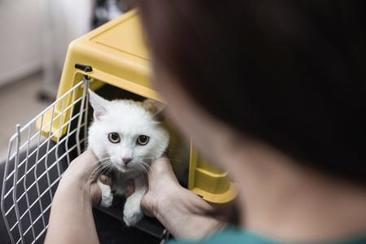
Owner Surrender is something we will bring into the rescue on special circumstances only at this time and must have a Foster Home to go to. Usually those circumstances of Owner Surrender are extreme, such as if a person has died, military personnel has been called in for duty or moving where they cannot take their cat, or someone has become homeless. Right now we are severely lacking in Foster Homes for cats making it difficult to bring in new cats. With growth we may be able to take on more Owner Surrenders, but our primary objective for cats is on strays or overcrowded shelters and rescues.
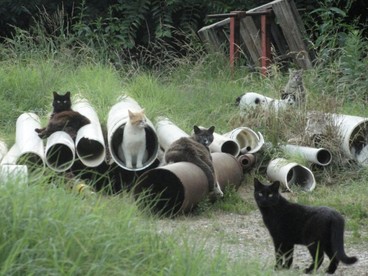
A Feral Cat is a cat who has either never had any contact with humans or has reverted to a feral state for survival and lack of human contact. Feral cats are generally fearful of people and survive on their own outdoors. A feral cat is not likely to ever become a lap cat or enjoy living indoors. Adult feral cats are not socialized to people, which means they cannot be adopted. As a result, they are likely to be killed if picked up by animal control or brought to shelters, so it is in their best interest to continue living outdoors. ALPRAS does have a Feral Cat Colony in Fort Pierce, Florida that we watch over. Donations or Sponsors are very much appreciated to ensure every Feral Cat is spayed, neutered, vaccinated, and fed. We hope to help more Feral Cats in the future.

Feral Kittens can come into the rescue with an available Foster Home as long as they are of the appropriate age. There is a window of time where Feral Kittens can be Rehabilitated into being a Domesticated Kitten/Cat. This window begins from the time you can get close to them. If the Feral Queen trusts a human, she may let them interact with her kittens. If that is the case, the sooner they can be handled the better. A Kitten of 6 months or older is generally not one that can be rehabilitated as they are Sub Adults at this time. Many kittens between 6-8 months are either ready to get pregnant or already are. For them, Trap-Neuter-Release programs are the best alternative alongside other feral adult cats in the area.

Every state, county, city, and even small towns usually have laws regarding animals. These restrictions can be either negative or positive in favor of animals, pet owners, rescues, and shelters. In the area where most of our Foster Homes reside there is a pet limit. Whereas this in many ways protects people and animals from hoarding situations, it also can hinder those working in rescue. No matter how responsible a rescue who uses foster homes is, the law is the law. Most foster homes have pets of their own and can only take in one foster animal at a time. Staying within the bounds of the law is important to be able to keep doing what we can for the animals knowing they will not be taken away because we ignored it.

Overcrowding can cause a variety of problems that cause both animals and humans to suffer. Its very hard to ignore the many pleas for help from all sides. We want to save as many as we can, but it must be done responsibly. When you have too many animals it can impact their health much like one person getting a cold can sweep a household or workplace into also having one. This is especially prevalent in houses with too many cats. Cats are very sensitive to Upper Respiratory Infections and since they often play, sleep, and clean other cats it makes them more susceptible. Additionally, animals can gain all manner of behavioral problems when overcrowded and humans also can have conflict with family members either in or out of the home.
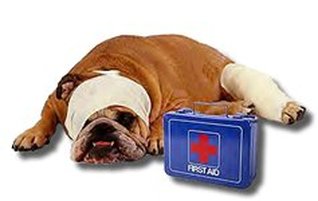
Veterinary Costs can skyrocket when helping animals, especially if the rescue does not have any discounts with the vet they work with. An animal who comes into a rescue who is of good health and not yet altered can cost $300-500 easily before they go to a new home. Some animals are not so lucky. From general injuries to major surgery, it has to be paid for and there are not always enough donations available. This makes bringing in tough cases hard for a small rescue, but we are doing an animal no favor by bringing them in just to suffer waiting for help.
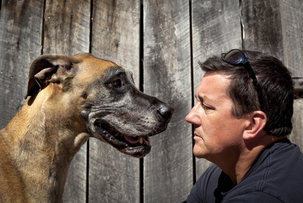
Compatibility/Personality Conflicts is an issue that should be addressed. Not every breed of dog or cat can work in a Foster Home. Those boundaries should be considered and respected. Example: A Disabled person may want to foster but has limited activity. Fostering a Boxer would be terrible idea as Boxers have extraordinary amounts of energy. This is not a good fit for the person or dog and would cause behavioral issues and personal conflicts. This same person may not mind fostering old dogs or disabled dogs because they have the extra time to care for them. A better match, a better relationship, a better chance for success in a future forever home.

Leaving Space can be a lifesaver. We like to stay a few animals below what we can take in. We never know what we may find or what emergency may happen or if for some reason an animal doesn't work out with a foster family or (hopefully never) an adoptive family. Strays are always an unexpected addition since we never know when they will show up! Saving space also means that if an animal turns into a Sanctuary animal, we still have room for a foster because once an animal becomes Sanctuary status, we lose that spot potentially for 1-20 years depending on their lifespan.

We want to succeed and grow! When a rescue or shelter experiences one or all of the negative dangers of rescue everyone suffers; People, Animals, other Rescues, Neighborhoods, Creditors, and even your Taxes. Someone has to clean up the mess left behind from a failed Rescue/Shelter/Sanctuary.
Did you know most rescues fail within 2 years? Over extending themselves in any way can cause emotional duress from what we see, monetary crisis from vet bills and general care, run ins with law enforcement and, if there is a facility (shelter location), problems with staff, property, repairs, disease, or overall management. We do not want this to happen to us or the animals. We want to grow, succeed, and help as many as we can! Having rules is a part of everything a smart organization does and we want to do our best for the lives in our hands.
Did you know most rescues fail within 2 years? Over extending themselves in any way can cause emotional duress from what we see, monetary crisis from vet bills and general care, run ins with law enforcement and, if there is a facility (shelter location), problems with staff, property, repairs, disease, or overall management. We do not want this to happen to us or the animals. We want to grow, succeed, and help as many as we can! Having rules is a part of everything a smart organization does and we want to do our best for the lives in our hands.
First Find Your Favorite !
|
Step Four :
|
Home Visit
1. Check for Safety - Pets can get into all sorts of things or may have a bad habit.
2. Meet all Family Members - Making sure everyone gets along/ok with adoption. 3. Meet other Pets - See condition and possibly have pets meet with ALPRAS Pet. 4. Advise on Changes - Some pets may have extra requirements/needs. 5. Answer Questions - Making sure everyone is on the same page. * Some ALPRAS animals require more than one home visit. **Even ALPRAS Cats (and some other animals) have home visits! |
|
Step Five :
|
Adoption !
Once an Application and Home Visit has been approved, we move to Adoption!
1. We bring your new ALPRAS Pet to his/her new home! 2. Make sure everything is going well with pets and family members. 3. Ensure requirements are met. 4. Go over paperwork, answer any questions, sign adoption agreement & adopt fee. 5. Congratulations! You're a new Pet Guardian and member of the ALPRAS Family! |
Why so many steps?
Step 1 - Take your time, pets can live a long life and make sure it's right for you.
Step 2 - Adoption Application helps us make sure we vet the home they go to. We put a lot of love and care into our animals, we want to make sure they are going to the best place for them and a good fit for you. Step 3 - Making sure there is a connection for both animal and human. Step 4 - Home Visit ensures both people and pets are safe and shows the family dynamic/approval. We want to get it right the first time, every time. Step 5 - Finalizing by ensuring the adopter has all the tools they need for success. |
Here at Agatha's Lucky Paws, we have an important mission that is close to our hearts in caring for those animals in Sanctuary.
Animals can become Sanctuary Residents for many different reasons.
If you want to learn about how to help Sanctuary Animals, click here.
To learn more about how our Sanctuary works, see below!
Most Sanctuary Animals have extenuating circumstances that are beyond what can be handled by most adopters either at the time or for the rest of animal's future life.
We will explain a little bit more in detail here.
1. Long term animals that need rehabilitation or extensive training.
When an animal comes into the rescue, most times we know right away what's wrong and what's right.
For instance, an animal that may have obvious severe injuries or require something like an amputation, we know that it may be a while depending on how bad off they are. Some animals are touch and go for a time and even if they make it through they may be facing a tough road to recovery. Oftentimes the circumstances surrounding how they come in and begin recovery greatly impact the outcome in most cases. Behavioral difficulties can arise even in the best of dogs when they are put under duress or forced to endure long periods boredom while healing. In cases like these, it is not only Physical Rehabilitation that is required, but also Behavior Rehabilitation.
Some animals come into the rescue, and even with all the experience a human has with animals, they are just as mysterious as trying to understand a human being. It isn't until you get to know them, truly know them, that their truth comes out. This could be something cause by prior abuse or be as simple as just a host of behavioral problems from lack of training that begin to surface one after another. It can be akin to fixing an old car. You start replacing the obvious parts but as you go and the car gets better the other issues become much more obvious (or more mysterious! What is that weird noise....). When this happens to the extreme, it can require months or even years of rehabilitative training. We do everything we can to help them on their way to a new home with the understanding that sometimes the best healer is time and patience.
A great example of this type of situation was Spock who is doing very well now and has been adopted! You can see his pictures and updates on our Success Stories page.
When an animal comes into the rescue, most times we know right away what's wrong and what's right.
For instance, an animal that may have obvious severe injuries or require something like an amputation, we know that it may be a while depending on how bad off they are. Some animals are touch and go for a time and even if they make it through they may be facing a tough road to recovery. Oftentimes the circumstances surrounding how they come in and begin recovery greatly impact the outcome in most cases. Behavioral difficulties can arise even in the best of dogs when they are put under duress or forced to endure long periods boredom while healing. In cases like these, it is not only Physical Rehabilitation that is required, but also Behavior Rehabilitation.
Some animals come into the rescue, and even with all the experience a human has with animals, they are just as mysterious as trying to understand a human being. It isn't until you get to know them, truly know them, that their truth comes out. This could be something cause by prior abuse or be as simple as just a host of behavioral problems from lack of training that begin to surface one after another. It can be akin to fixing an old car. You start replacing the obvious parts but as you go and the car gets better the other issues become much more obvious (or more mysterious! What is that weird noise....). When this happens to the extreme, it can require months or even years of rehabilitative training. We do everything we can to help them on their way to a new home with the understanding that sometimes the best healer is time and patience.
A great example of this type of situation was Spock who is doing very well now and has been adopted! You can see his pictures and updates on our Success Stories page.
2. Hospice for very aged or terminally ill animals.
Sometimes what we see, isn't so easily seen by others.
Age shouldn't always be a factor when adopting an animal, but all to often it is. We know that when a person who just wants a companion animal to hang out with them and not much else and still go for a much younger pet, or even a baby animal, that it's their emotions they are protecting. As heartbreaking as it is, most animals just do not live as long as people do. Sometimes it is so traumatic for a person to lose their pet that they will never adopt or own a pet again. Our bonds with animals can be stronger than they are with people in some cases. We have even heard more than one person who comes to say hello to the adoptable animals at events say that their pet was their soul mate. While we understand this human behavior and can sympathize with them, it is hard to see a perfectly well behaved and trained dog get looked over again and again because of age, physical abnormality, disability, or because of the only in recent years discovered 'Black dog/cat Syndrome'. This is what the Sanctuary is here for.
A great example of this type of situation was Jazz who was old, disabled, and suffered 'black dog syndrome'. Though she was never adopted and her time on this earth ran out, she was a part of the ALPRAS family. Until just before she passed away, Jazz was a Sanctuary Dog while still 'up for adoption'. You can see her story on our Memorial Page.
Some of the worst news a person can hear about a loved one is that they have a Terminal Illness such as the 'Big C' (cancer).
Being Terminally Ill doesn't mean that you cannot enjoy what life you have left. While in this country we cannot help our human loved ones who are ready to move on do so, we have the power to do this with our animals and end their suffering. Before that happens, we want them to know the love and companionship they deserve. Most of the time when we have a Hospice Animal in the rescue it is either an animal who has developed a congenital defect or was a surprise discovery in an animal just recently brought into the rescue. This is not their fault, they didn't ask for this to happen to them and we will not hold it against them. Though some animals with a terminal illness may live several years and still be adoptable for someone willing to put their heart on the line to give them a home for whatever time they have remaining in their life, we are there if a 'Forever Home' isn't.
We become their forever home until they cross the Rainbow Bridge.
A great example of this type of situation was Caramon who was diagnosed with Cancer and lived a great life in the Sanctuary.
Sometimes what we see, isn't so easily seen by others.
Age shouldn't always be a factor when adopting an animal, but all to often it is. We know that when a person who just wants a companion animal to hang out with them and not much else and still go for a much younger pet, or even a baby animal, that it's their emotions they are protecting. As heartbreaking as it is, most animals just do not live as long as people do. Sometimes it is so traumatic for a person to lose their pet that they will never adopt or own a pet again. Our bonds with animals can be stronger than they are with people in some cases. We have even heard more than one person who comes to say hello to the adoptable animals at events say that their pet was their soul mate. While we understand this human behavior and can sympathize with them, it is hard to see a perfectly well behaved and trained dog get looked over again and again because of age, physical abnormality, disability, or because of the only in recent years discovered 'Black dog/cat Syndrome'. This is what the Sanctuary is here for.
A great example of this type of situation was Jazz who was old, disabled, and suffered 'black dog syndrome'. Though she was never adopted and her time on this earth ran out, she was a part of the ALPRAS family. Until just before she passed away, Jazz was a Sanctuary Dog while still 'up for adoption'. You can see her story on our Memorial Page.
Some of the worst news a person can hear about a loved one is that they have a Terminal Illness such as the 'Big C' (cancer).
Being Terminally Ill doesn't mean that you cannot enjoy what life you have left. While in this country we cannot help our human loved ones who are ready to move on do so, we have the power to do this with our animals and end their suffering. Before that happens, we want them to know the love and companionship they deserve. Most of the time when we have a Hospice Animal in the rescue it is either an animal who has developed a congenital defect or was a surprise discovery in an animal just recently brought into the rescue. This is not their fault, they didn't ask for this to happen to them and we will not hold it against them. Though some animals with a terminal illness may live several years and still be adoptable for someone willing to put their heart on the line to give them a home for whatever time they have remaining in their life, we are there if a 'Forever Home' isn't.
We become their forever home until they cross the Rainbow Bridge.
A great example of this type of situation was Caramon who was diagnosed with Cancer and lived a great life in the Sanctuary.

3. Animals unadoptable to the general public for safety, liability, or disability.
Safety is something we will not risk on other people or animals outside ALPRAS
Safety : There are some diseases and conditions that are not safe for the public to deal with.
A Cat who has been diagnosed with FeLV (Feline Leukemia Virus) is Highly contagious to other cats because of how it is transmitted. This is a situation where it is absolutely unacceptable and would be incredibly irresponsible to adopt out a cat suffering this condition*. A cat who has developed FIP (Feline Infections Peritonitis) actively is no longer a direct threat to other cats** because once they begun suffering from its effects, the exposure had happened in most cases long prior. It is often considered on par with an Auto Immune Disorder. The reason we will not adopt out a cat we know has FIP is because the suffering they endure before death can be traumatizing and death can be extremely sudden. What is more, cats who develop FIP are prone to 'going off to die' they will hide and we have heard of cases where the cat who has been missing for days were found dead somewhere in or around a person's home. That is also unacceptable and we will not adopt out a cat who has FIP.
Safety is something we will not risk on other people or animals outside ALPRAS
Safety : There are some diseases and conditions that are not safe for the public to deal with.
A Cat who has been diagnosed with FeLV (Feline Leukemia Virus) is Highly contagious to other cats because of how it is transmitted. This is a situation where it is absolutely unacceptable and would be incredibly irresponsible to adopt out a cat suffering this condition*. A cat who has developed FIP (Feline Infections Peritonitis) actively is no longer a direct threat to other cats** because once they begun suffering from its effects, the exposure had happened in most cases long prior. It is often considered on par with an Auto Immune Disorder. The reason we will not adopt out a cat we know has FIP is because the suffering they endure before death can be traumatizing and death can be extremely sudden. What is more, cats who develop FIP are prone to 'going off to die' they will hide and we have heard of cases where the cat who has been missing for days were found dead somewhere in or around a person's home. That is also unacceptable and we will not adopt out a cat who has FIP.

Please note: FeLV is a terrible disease that affects cats. Older cats who have contracted FeLV may live several years and gain Sanctuary Status here at ALPRAS. The only time ALPRAS will adopt out an Adult Cat with FeLV is if the Adopter has dedicated their house to FeLV rescue haven, these special people are extremely rare and very much cherished in the rescue community. Kittens do not survive FeLV well and most do not make it to 1 year of age(In extremely rare instances they may make it up to 3 years of age). There is nearly no quality of life for a kitten who has FeLV only pain and constant secondary infections. We will do a minimum of 3 separate Snap Tests to verify that a kitten or cat has the disease due to the fact there can be false positives. Usually kittens with false positives will present as healthy robust kittens while those with the disease are more often lethargic or quiet. If it is found that kittens are full positive and showing the correct signs we will humanely euthanize them.
In the case of FIP, it is hard to detect, there is no vaccination for it, and currently no cure*. Due to this, no matter how healthy an animal appears despite being under supervision of rescue and/or veterinarian, it can have a case of FIP that may show up after adoption. It is a heartbreaking situation but one out of everyone's control. If an animal adopted out by us does get diagnosed with FIP, please let us know immediately. We always take back our animals and understand if the animal is returned to us for this reason. In either case, if the adopter(s) choose to keep the animal until it passes or returns the animal to us, we will allow the adopter to choose another cat that fits well into their home without an adoption fee with a copy of their veterinary records.
In the case of FIP, it is hard to detect, there is no vaccination for it, and currently no cure*. Due to this, no matter how healthy an animal appears despite being under supervision of rescue and/or veterinarian, it can have a case of FIP that may show up after adoption. It is a heartbreaking situation but one out of everyone's control. If an animal adopted out by us does get diagnosed with FIP, please let us know immediately. We always take back our animals and understand if the animal is returned to us for this reason. In either case, if the adopter(s) choose to keep the animal until it passes or returns the animal to us, we will allow the adopter to choose another cat that fits well into their home without an adoption fee with a copy of their veterinary records.
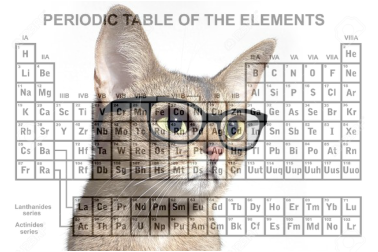
* There are studies going on in Europe that have cause some cases of remission and there has been some progress with non-effusive FIP at the Tennessee Veterinary School in 2009 with a reported 3 cases cured. In early spring 2016 scientists did a controlled study with a possible cure in which 6 out of 8 cats survived and remained thus for an observatory 8 months. Currently, naturally occurring FIP has not been tested with this possible cure. This is still an ongoing study and by no means suggests that there is a certain cure for the terrible disease that is FIP.

**Owners of Ferrets need to be aware that there is now a recognized disease of Ferret Infectious Peritonitis which is extremely similar to FIP (Feline). While FECV Ferret Enteric Coronavirus has been known a while, there are no vaccinations for either of these diseases in Ferrets.

For Dogs, any dog who has contracted Parvo (Canine Parvovirus) will not be adopted out unless they manage to fully recover through intensive veterinary intervention. Parvo is nearly always fatal without treatment with a less than 10% survival rate. Dogs (mostly puppies) who do get treatment have a 80 - 95% chance, however, treatment can skyrocket easily into thousands of dollars. We are extremely careful when bringing in a new dog because not only is Parvo so contagious from even casual contact, it can live on ground surfaces for well over a year. Bleach is the only thing that can 'kill' the virus and even then it's no guarantee. It is one of the hardiest Viruses out there and the only way to truly battle it is with Prevention.
Please note: We are still a small rescue and cannot afford to bring in dogs or puppies who have Parvo. We know there are rescues out there who have vastly more funds to handle such a severe disease and may be willing to take on such a huge expense. We will do all we can should an animal we have in our care somehow become a victim of Parvo, however, we do Snap Test every animal who come in the rescue and believe firmly in preventative care with life saving vaccinations.
Please note: We are still a small rescue and cannot afford to bring in dogs or puppies who have Parvo. We know there are rescues out there who have vastly more funds to handle such a severe disease and may be willing to take on such a huge expense. We will do all we can should an animal we have in our care somehow become a victim of Parvo, however, we do Snap Test every animal who come in the rescue and believe firmly in preventative care with life saving vaccinations.

Liability: Some animals we would be knowingly, legally negligent to adopt out.
Some animals no matter how much you work with them cannot manage to make the changes necessary to make them safely rehomable. Severe cases of aggression, fear, or mental illness would be like sending out a violent criminal or unstable mental patient. Adopting out an Aggressive Animal is just shy of breaking the law in most places and is breaking it in some. Nearly every Animal Control Services department have strict rules regarding 'Dangerous Dogs', and for good reason. Dogs labeled 'Dangerous' have many requirements placed on the owners from City, County, and even State laws and ordinances. Adopting a dog that falls into this category can endanger the public if the adopter doesn't follow every single instruction given by the rescue and/or meeting the regulations of the law. It sets people and dogs up to fail in addition to potentially having legal action attempted to be taken to the adopter should something happen to someone else. It could be also potentially be brought against ALPRAS by the adopter, a victim of aggressive behavior, and law enforcement. No one wins and the one who loses most in the end is usually the dog who will pay with their life. Here in Sanctuary, so long as the animal can be controlled and secure, they will have as fulfilling of a life we can possibly give them without endangering anyone.
Please note: Cats are not exempt from 'Dangerous' status. Any animal can be labeled 'Dangerous' by law if they violently impact the public on more than one occasion or based off the severity of one altercation.
Some animals no matter how much you work with them cannot manage to make the changes necessary to make them safely rehomable. Severe cases of aggression, fear, or mental illness would be like sending out a violent criminal or unstable mental patient. Adopting out an Aggressive Animal is just shy of breaking the law in most places and is breaking it in some. Nearly every Animal Control Services department have strict rules regarding 'Dangerous Dogs', and for good reason. Dogs labeled 'Dangerous' have many requirements placed on the owners from City, County, and even State laws and ordinances. Adopting a dog that falls into this category can endanger the public if the adopter doesn't follow every single instruction given by the rescue and/or meeting the regulations of the law. It sets people and dogs up to fail in addition to potentially having legal action attempted to be taken to the adopter should something happen to someone else. It could be also potentially be brought against ALPRAS by the adopter, a victim of aggressive behavior, and law enforcement. No one wins and the one who loses most in the end is usually the dog who will pay with their life. Here in Sanctuary, so long as the animal can be controlled and secure, they will have as fulfilling of a life we can possibly give them without endangering anyone.
Please note: Cats are not exempt from 'Dangerous' status. Any animal can be labeled 'Dangerous' by law if they violently impact the public on more than one occasion or based off the severity of one altercation.
|
Julien Nikolai Sven Fear Cases can manifest in various ways and can fall into several categories. The most extreme are either almost entirely shut down, possess widely erratic behavior, or are so out of control in fear that anything sends them into a fight or flight mode. These are some of the saddest cases because it is not a behavior that can just be 'trained out of them' and medication is not always the answer. Time and patience is one of the only ways to handle recovering trust and gaining confidence. Unless a fear case is able to be rehabilitated to an adoptable level or an highly experienced adopter or professional steps up to bring them into their home, they become Sanctuary animals.
|

Mental Illness is the last on this sub list. Just like with people, some individuals are only able to handle or connect to a very select few people who are either relatives or professionals equipped to handle their conditions. Mental Illness can be very scary to outsiders and the patient can be very scared or uncertain of themselves and the world around them.
Julien the Rottweiler was a prime example of this. Due to his Physical Malady's as a young dog he developed severe Fear Case issues. On top of that he suffered from Severe Anxiety and OCD (Obsessive Compulsive Disorder). It was a perfect storm and it is because of this that he became 'unadoptable'. There were very few people who would have been able to handle him and he trusted far fewer than that. His rehabilitation was ongoing for 7 years. He was never able to be up for adoption and he was always a Sanctuary Dog, but that doesn't mean we didn't do everything we could to make his life easier and provide quality to it. He was Well Loved and Cherished here and is the Symbol and Poster Dog for the ALPRAS Sanctuary.
Julien and his story can be found on our Memorial Page.
Julien the Rottweiler was a prime example of this. Due to his Physical Malady's as a young dog he developed severe Fear Case issues. On top of that he suffered from Severe Anxiety and OCD (Obsessive Compulsive Disorder). It was a perfect storm and it is because of this that he became 'unadoptable'. There were very few people who would have been able to handle him and he trusted far fewer than that. His rehabilitation was ongoing for 7 years. He was never able to be up for adoption and he was always a Sanctuary Dog, but that doesn't mean we didn't do everything we could to make his life easier and provide quality to it. He was Well Loved and Cherished here and is the Symbol and Poster Dog for the ALPRAS Sanctuary.
Julien and his story can be found on our Memorial Page.
Under the label of Liability, we take careful consideration of every animal we bring in. They are fully evaluated and worked with to give them every possible chance. If an animal becomes a Sanctuary citizen due to Liability, the main thing that will cause it is Unpredictable Behavior. Most people struggle to understand anything their dog is trying to tell them. Trainers and Veterinarians have a great trove of knowledge of animals and ways to help them, but don't have all the answers. Animal Behaviorists can decipher a world of dog language through study and observation and can usually tell you what's making a dog (or cat) tick better than anyone, but even they can be stumped or shocked by not being able to read their signs (Usually because they aren't showing any). If the top people working with animals cannot predict what an animal will do, an everyday person does not have much of a chance. This is unfair to anyone involved with the animal actively or passively and again, is usually most unfair for the animal because in the end, they will usually be the ones who suffer most. We would rather hold them in our arms as they leave this world from old age than see them go in a whirlwind of violence and trauma.
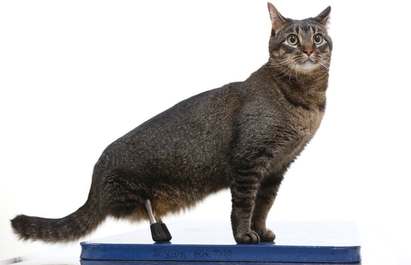
Disability: Some ailments are beyond what people will be able to handle or accept.
Though people are slowly coming to see the Disabled Animals are still wonderful and amazing individuals who can not only live 'normal' lives, but often super enrich the lives of their owners and inspire everyone around them, there is still much stigma and an unwillingness to take on a 'broken' pet. Deaf, Blind, Amputee, and Wheelchair bound dogs are the hardest to find homes for. Panda, a past Sanctuary dog, was Deaf. He was a great dog with a hilarious sense of humor and smart as all get out, but no one wanted him. He was up for adoption all the way until the day he crossed the Rainbow Bridge. He is still loved and missed by those who knew him very much. Though having a deaf dog isn't nearly the back breaking burden people imagine it is, they are looked over time and time again so with that in mind, animals with visually obvious 'defects' are generally outright ignored. Just like with any ALPRAS Animal, we will stick by them until the end and work to find them homes.
Though people are slowly coming to see the Disabled Animals are still wonderful and amazing individuals who can not only live 'normal' lives, but often super enrich the lives of their owners and inspire everyone around them, there is still much stigma and an unwillingness to take on a 'broken' pet. Deaf, Blind, Amputee, and Wheelchair bound dogs are the hardest to find homes for. Panda, a past Sanctuary dog, was Deaf. He was a great dog with a hilarious sense of humor and smart as all get out, but no one wanted him. He was up for adoption all the way until the day he crossed the Rainbow Bridge. He is still loved and missed by those who knew him very much. Though having a deaf dog isn't nearly the back breaking burden people imagine it is, they are looked over time and time again so with that in mind, animals with visually obvious 'defects' are generally outright ignored. Just like with any ALPRAS Animal, we will stick by them until the end and work to find them homes.

Knowing this, there are some specific Disabilities that far outweigh what a person may be able to handle or is safe for others to handle. Some illnesses bring on a barrage of issues that are overwhelming for those in the rescue and we can only imagine how it would be for a potential adopter. Some illnesses or issues also put the animal in the Liability or Safety category as well. A good example of this was a Sanctuary dog Rat Terrier/Deer Chihuahua named Rukia. She suffered from both Localized and Generalized Seizures. She would display some erratic behavior before her seizures that could make her look and sound like a prey animal putting her in danger from other animals, both dogs and cats, as well as Birds of Prey. Sometimes she would become extremely aggressive prior to having a Seizure. This at first was directed only at dogs but soon became towards cats and eventually people she knew and loved. The older she got the progression was worse and less predictable. She even became a danger to herself over time unable to recognize her own body. This erratic behavior coupled with seizures that destroyed a little more of her brain every time eventually led her to be humanely euthanized when she was beyond being able to live a quality of life. Rukia wouldn't have been safe to rehome for her or anyone else with the symptoms she possessed. Rukia and her story can be found on our Memorial Page.
|
Sanctuary Animals who become so due to Disability are just like all the animals we bring into the Sanctuary, we are in it for the long haul. We won't feel sorry for them, we will uplift them, and we will never give up on them! Though the reasons an animal becomes a Sanctuary Animal are not generally pleasant, we are determined to give it our all to help lead a quality life as much as humanly and humanely possible. This is where firmly Dedicated Foster Homes and Sponsors can really shine.
|
Frequently Asked Questions
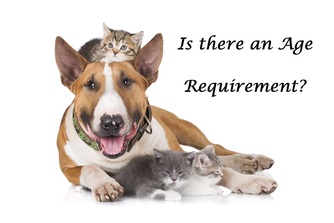
There is no age requirement to become an ALPRAS Sanctuary Resident. Any animal at any age could have complications seen before or discovered after they have come to the Rescue. We are very mindful about what animals we bring into the rescue to make sure we do not over extend ourselves. In fact, we do usually keep at least one very old dog in the Sanctuary rescued from 'death row' from a shelter. However, sometimes (though rarely) a very young dog or puppy has become a resident due to circumstances beyond anyone's control.
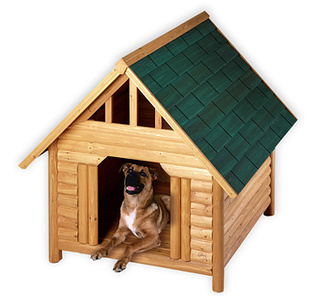
Do you have a Facility or Shelter? Not at this time.
We are a small group of Foster Homes, this limits us on how many animals we take in. One day in the future we may be able to create a place for more Sanctuary animals, but right now that is not possible. Because of this we do not knowingly take in a dog or cat that we know has no hope of adoption by the public aside from having one old dog who has been dumped at a shelter at a geriatric age at a time at the Founder's personal residence. If a dedicated Foster Home is willing, they can opt to have one of their Foster Animal's openings be dedicated to housing a Sanctuary Aniamal. These special Foster Homes and Animals are often called 'Furever Fosters' by the rescue community.
We are a small group of Foster Homes, this limits us on how many animals we take in. One day in the future we may be able to create a place for more Sanctuary animals, but right now that is not possible. Because of this we do not knowingly take in a dog or cat that we know has no hope of adoption by the public aside from having one old dog who has been dumped at a shelter at a geriatric age at a time at the Founder's personal residence. If a dedicated Foster Home is willing, they can opt to have one of their Foster Animal's openings be dedicated to housing a Sanctuary Aniamal. These special Foster Homes and Animals are often called 'Furever Fosters' by the rescue community.
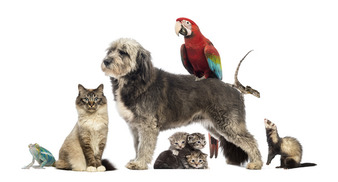
Are there any types animals you won't allow in your sanctuary? Yes & No
While we love all types of animals, we are not equipped to take in all types. Some animals require special care or knowledge. If we have a Foster Home or Dedicated Sanctuary Home (or Furever Foster) that knows a lot about or specializes in a type of animal we will allow Sanctuary then. Certain species, such as Birds and Reptiles, can live a very long time, far beyond average pet lifespans.

Are there any Breeds of Dogs that you won't take in? No.
We are a non breed biased rescue.
"We believe in one breed, and that breed is Dog."
Any dog, cat, or other animal that has come into the rescue who needs Sanctuary Status will receive it. Keeping in mind that we want every single animal to find a forever home, sometimes it just isn't in the cards for them. This just means it's in ours to look over them as animal guardians.
Big or Small, gotta love 'em all!

Can I Adopt a Sanctuary Animal? Sometimes.
Some animals will have dual status as both Adoptable and Sanctuary.
This happens when an animal is difficult adopt due to:
- Hospice or being very old
- Having complicated disabilities
- Require tight restrictions on the Adopter
ALPRAS is a full disclosure rescue. We want you to know everything and will never try to hide their issues. It's a part of our code to make the right match the first time every time. This can only be accomplished with honesty and making sure we set up both the animal or adopter up for success. We won't adopt out an animal unless we are sure both animal and adopter can cope with all issues.
Some animals will have dual status as both Adoptable and Sanctuary.
This happens when an animal is difficult adopt due to:
- Hospice or being very old
- Having complicated disabilities
- Require tight restrictions on the Adopter
ALPRAS is a full disclosure rescue. We want you to know everything and will never try to hide their issues. It's a part of our code to make the right match the first time every time. This can only be accomplished with honesty and making sure we set up both the animal or adopter up for success. We won't adopt out an animal unless we are sure both animal and adopter can cope with all issues.
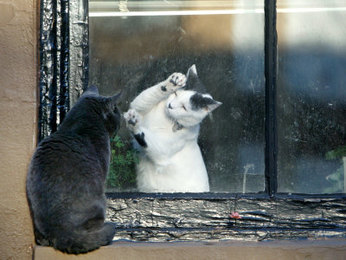
Do you keep Sanctuary and Adoptable Animals separate? Rarely.
We strive to make every animal have as much quality of life as possible and that means having them be a part of the household they reside in. If a Sanctuary Animal is separated from others in any Foster Home it is usually because:
- They have health concerns that either put them or other animals at risk.
- There are Safety concerns to others animals, such as aggression.
- They are healing from a major surgery or illness and need to be kept calm.
A prime example of needing to keep animals separate is a cat who has FeLV. Since it is highly contagious, they could not mingle freely with other cats.
We strive to make every animal have as much quality of life as possible and that means having them be a part of the household they reside in. If a Sanctuary Animal is separated from others in any Foster Home it is usually because:
- They have health concerns that either put them or other animals at risk.
- There are Safety concerns to others animals, such as aggression.
- They are healing from a major surgery or illness and need to be kept calm.
A prime example of needing to keep animals separate is a cat who has FeLV. Since it is highly contagious, they could not mingle freely with other cats.
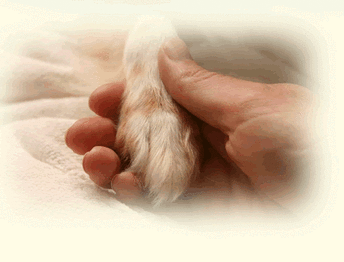
Do you Euthanize Sanctuary Animals? We are No-Kill. What this means:
"No-kill" means that animals are not destroyed except in cases of terminal and painful illness, or when compassion demands euthanasia because there is no reasonable alternative.
Every ALPRAS animal is a part of our family and this means we will do everything within our means to help an animal live a happy, healthy, quality life.
Only extreme cases can take the matter out of our hands.
"No-kill" means that animals are not destroyed except in cases of terminal and painful illness, or when compassion demands euthanasia because there is no reasonable alternative.
Every ALPRAS animal is a part of our family and this means we will do everything within our means to help an animal live a happy, healthy, quality life.
Only extreme cases can take the matter out of our hands.
If you have any questions about us, the animals in the rescue,
adoption, fostering or how to help:
Please contact us at [email protected]
adoption, fostering or how to help:
Please contact us at [email protected]
Follow us on Facebook at Agatha's Lucky Paws Rescue and Sanctuary or on Twitter @AgathasLuckyPaw












